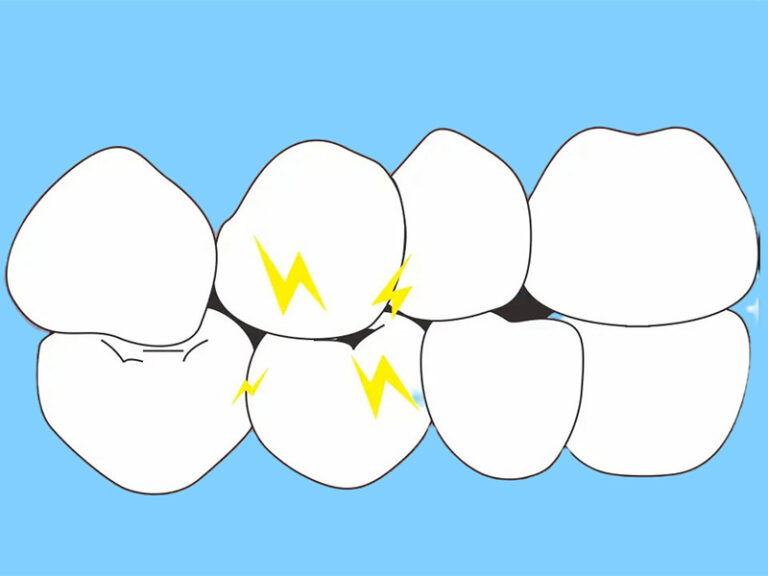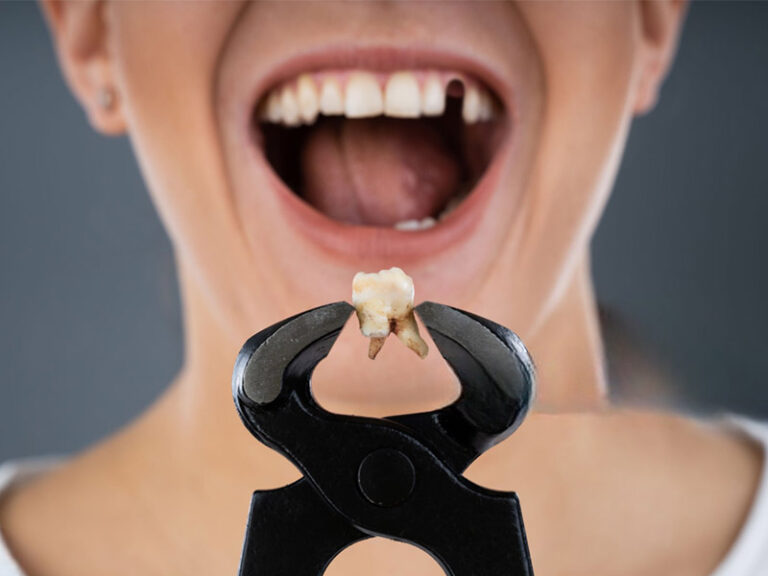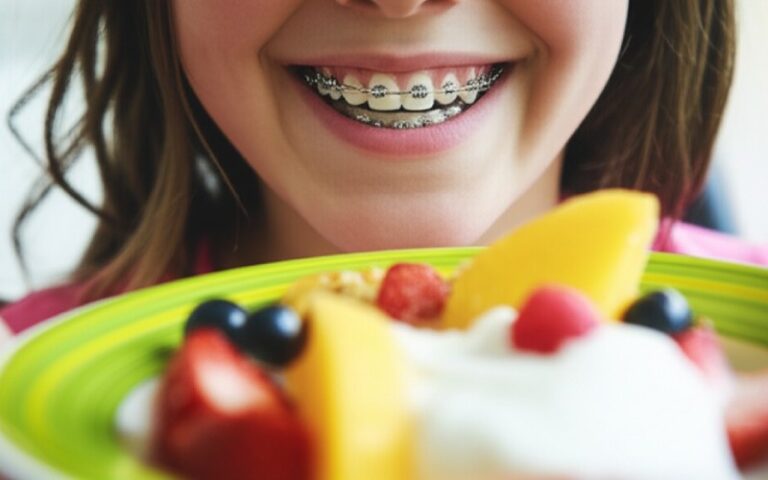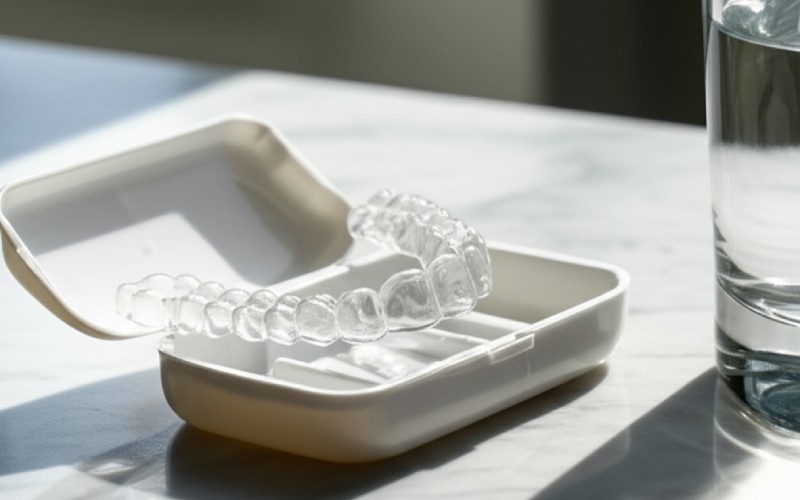
Schützende Dental-Beißschiene: Wie sie Ihren Biss und Ihre Zähne rettet
If you clench your jaw or grind your teeth, this article is for you. I will explain everything you need to know about bite splints. I will make it easy to understand. You will learn what a bite splint is, why you might need a bite splint, and how it can protect the teeth for years to come. This article is worth reading because it simplifies a complex dental topic and shows you how a simple device can improve your oral health.
Inhaltsübersicht
What Is a Dental Bite Splint?
A bite splint is a dental device that you wear over your upper or lower teeth. It is often a clear, plastic retainer-like piece. Its main job is to stop your top and bottom teeth from touching. This is very important if you clench or grind your teeth.
The reason your dentist wants you to get a bite splint is to prevent more damage. When you grind your teeth, you put a lot of force on them. This can cause wear and tear. Your tooth enamel, the hard outer layer, can wear down. This can expose the softer layer called dentin. This leads to pain and sensitivity. The bite splint acts as a barrier, a protective shield for your tooth surfaces. It takes the hit so your teeth don’t have to.
This little appliance would help your jaw muscles relax. When you constantly clench, your jaw is always working. This can lead to pain in the temporomandibular joint (TMJ). The TMJ is the hinge that connects your jaw to your skull. A bite splint can help reduce that jaw pain and make your jaw feel better. This is why a dentist will often prescribe one for patients with TMJ problems. A bite splint is a key tool in modern dentistry.
Is a Bite Splint the Same Thing as a Night Guard?
People often use the terms bite splint and Nachtwächter to mean the same thing, but they can be different. A simple nightguard you buy at the store is mainly for one thing. That mouthguard is designed to prevent your teeth from grinding against each other. It’s a cushion. These are often made of a soft material. They are a good first step, but they don’t always fix the root problem with your bite.
A bite splint, especially an occlusal splint, is more advanced. It is custom-made for your mouth by a Dentallabor. It is not just a cushion. A bite splint is carefully designed to guide your jaw into a more comfortable and stable position. This helps relax the muscles and protect your jaw joint. Dentists might describe it as a therapeutic appliance. It not only protects your teeth but can also be used to treat a temporomandibular disorder (TMD).
So, while a basic night guard offers some protection, a custom-made bite splint offers a more complete solution. A hard acrylic bite splint provides a stable surface. This stable surface, or occlusal plane, helps your jaw find a natural resting spot. It stops the muscles from wanting to clench and grind. Think of a night guard as a simple helmet, but a bite splint is a full, custom-fit safety system for your entire bite.
Why Do I Clench My Teeth? Do I Need a Bite Splint for Bruxism?
Many people clench or grind their teeth and don’t even know it. This condition is called bruxism. For many of us, bruxism is caused by stress and anxiety. When we are worried or focused, our body tenses up, and that includes our jaw muscles. We might clench during the day at work or grind our teeth all night while we sleep. Over time, this constant pressure causes serious tooth damage.
So, do you need a bite splint for bruxism? If your dentist sees signs of damage, the answer is likely yes. Signs include flattened or worn-down teeth, cracked enamel, or complaints of a sore jaw. A bite splint is the most common and effective treatment. It works because it acts like shock absorbers that disperse the force. Instead of your teeth taking all that pressure, the bite splint takes it. This stops the cycle of damage.
The bite splint makes you aware of the habit. It also provides immediate relief. The goal of the bite splint is not just to be a barrier. It is designed to prevent the habit from getting worse. By protecting your teeth and gums, the bite splint ensures the long-term health of your mouth. It is a simple tool to manage a problem that can have big consequences if you ignore it.
How Does a Dentist Plan for Making Bite Splints?
The process of making bite splints starts in the dentist’s chair. It’s a very precise process. First, your dentist will do a full exam of your teeth, gums, and jaw. They need to understand your unique bite. They will look for signs of wear on your tooth surfaces and check your jaw’s range of motion. This exam helps them decide what kind of bite splint you need.
Next comes the fun part: taking a mold of your teeth. Your dentist will use a soft, putty-like material to create an exact copy of your teeth. This is called an impression. Some modern dental offices use a digital scanner instead of putty. Either way, the goal is to get a perfect model of your dentition. They will take an impression of both your top and bottom teeth, and they will also record your patient’s bite. This shows how your teeth fit together.
This impression is the blueprint for your custom bite splint. Accuracy is key. If the mold is not perfect, the bite splint will not fit correctly. An ill-fitting appliance can be uncomfortable or even make your jaw problem worse. That’s why a good dentist takes so much care during this step. They are creating the plan that the dental lab will use to build your protective device.
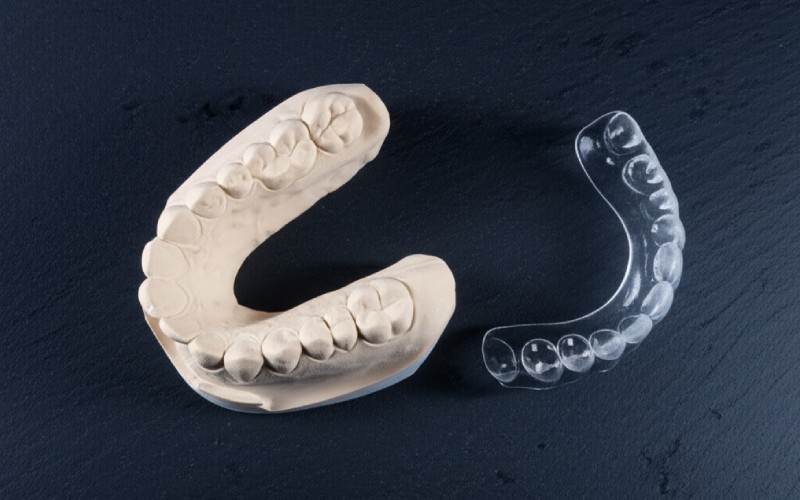
What Happens at the Dental Lab When Making Bite Splints?
Once your dentist has the perfect impression of your teeth, they send it to a dental lab. This is where the magic happens. At the dental lab, skilled technicians use your mold to create your bite splint. They are experts in making all kinds of dental restorations and appliances. The first thing they do is create a stone model of your teeth from the impression. This model is an exact replica of your mouth.
Using this model, the technician will fabricate your custom-fit bite splint. They use materials like a strong, clear acrylic. They carefully shape the material so that it rests comfortably against the teeth. The most important part is creating the right biting surface, or occlusal surface. It must be shaped perfectly to match the plan from your dentist. This ensures that when you wear the bite splint, your jaw is in a healthy, relaxed position.
The process at the dental lab takes time and skill. They focus on details like retention, which means the bite splint will snap onto your teeth and stay in place without feeling too tight. After the bite splint is made, it is polished until it’s perfectly smooth for better patient comfort. The finished bite splint is then sent back to your dentist for your fitting appointment. It’s a great example of teamwork between your dentist and the dental lab.
Can a Bite Splint Protect My Expensive Dental Crown or Restoration?
Yes, absolutely. This is one of the most important jobs of a bite splint. If you have invested in restorative work like a dental crown, bridge, or implant, you want to protect it. These dental restorations are strong, but they are not invincible. The same forces from teeth grinding that can damage a natural tooth can also damage a crown. A porcelain crown can chip or crack under intense pressure.
A bite splint is like an insurance policy for your dental work. By wearing it, you create a protective barrier between your expensive restoration and the opposing teeth. This is especially important for people who grind heavily. The bite splint absorbs the grinding forces, protecting the delicate porcelain or ceramic of your crown. Without a bite splint, you could end up needing to replace your dental restorations much sooner, which is costly.
Anyone with a significant amount of dental work should consider a bite splint. It helps ensure the longevity of the work. If you have a full mouth of crowns or a new implant, your teeth are no longer as susceptible to wear, but the restorations are. A bite splint is a small investment that protects a much larger one. It prevents chipping and breaking, saving you from extra trips to the dental chair.
What Are Bite Splints Made Of? Is Zirconia a Good Choice?
Bite splints can be made from a few different materials. The most common types are soft splints and hard splints. Soft splints are made from a flexible, rubbery material. They are often less expensive and can be comfortable. However, some people find that the soft material actually encourages them to clench more, like a chew toy. They also wear out faster.
Hard bite splints are usually made from a rigid acrylic. They are very durable and last much longer. The hard, smooth surface is ideal for allowing your teeth to slide freely, which discourages grinding. These are often considered the best option for treating moderate to severe bruxism and TMJ disorders. They are custom-made by a dental lab to fit your teeth perfectly.
A newer and very strong material is zirconia. Zirconia is a type of ceramic that is incredibly tough. It is sometimes used for dental crowns because of its strength. A zirconia bite splint is thin, strong, and very resistant to wear. It’s a great option for patients who are very heavy grinders and have broken other splints. It’s a premium material, but its durability can make it a good long-term choice for your bite.
How Should My New Bite Splint Feel in My Mouth?
When you get your new custom bite splint, your dentist will have you try it in. The fit should be snug but not painfully tight. It should click into place and feel secure. This security is called retention. You should be able to open your mouth, talk, and move around without it falling out. At first, it will feel strange and bulky. That is completely normal. Your mouth needs time to get used to having the appliance there.
Your bite will also feel different. When you close your teeth onto the bite splint, your back teeth should hit evenly on the flat plane of the splint. There should not be one high spot that hits first. Your dentist will check this very carefully. They may make small adjustments to the surface of the bite splint to perfect your bite. The goal is for your jaw muscles to feel relaxed when you bite down on it.
You should expect to drool a little more for the first few nights. Your mouth thinks the bite splint is food! This goes away quickly. It might take a week or two to get fully comfortable wearing one. But you should not feel any sharp pain or intense pressure on any single tooth. If you do, call your dentist. They can easily adjust the bite splint for better patient comfort.
Which Arch is Better for a Bite Splint: Upper or Lower?
This is a decision that your dentist will make based on your specific needs. Both upper and lower bite splints can be effective. However, there are a few reasons why one arch might be chosen over the other. An upper bite splint is often the standard choice. It is generally more stable and covers more of the occlusal surfaces of the teeth, which can be better for protecting a full arch of teeth from teeth grinding.
A lower bite splint is sometimes preferred for patient comfort. It can feel less bulky and may interfere less with your tongue. For people with a strong gag reflex, a lower bite splint can be a much better option. A lower appliance is also common when the patient has a lot of dental work, like bridges or crowns, on their upper teeth. The choice also depends on the condition of your periodontal ligament and if there is any bone loss.
Ultimately, it depends on your unique dentition and what your dentist is trying to achieve. Some special types of splints, called repositioning splints for the temporomandibular joint, have very specific designs that require them to be on one arch or the other. For most cases of simple teeth clenching or grinding, either an upper or lower bite splint will work well, as long as it is a custom-made bite splint that fits perfectly.
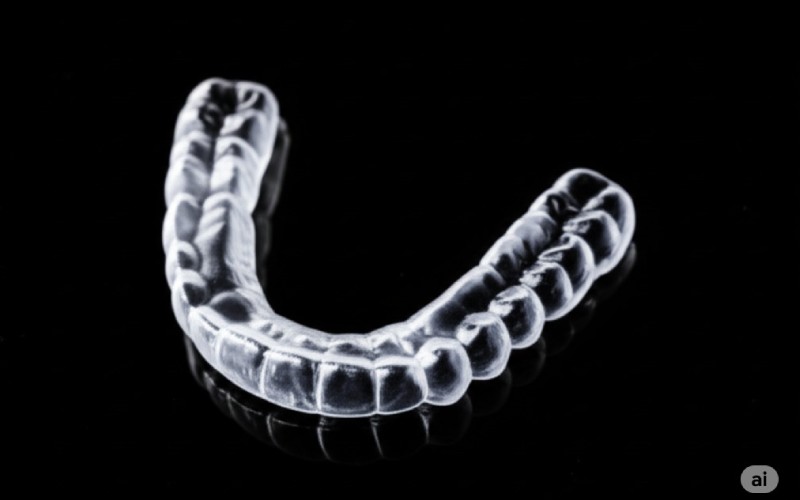
What Are the Long-Term Benefits of Wearing a Bite Splint?
Wearing a bite splint consistently has amazing long-term benefits for your oral health. The most obvious benefit is preventing tooth damage. You stop the slow destruction of your enamel caused by teeth grinding. This means fewer cavities, less sensitivity, and a lower risk of needing crowns or other major dental work down the road. You get to keep your natural tooth structure healthy.
Another major benefit is relief from pain. Many people who benefit from wearing a bite splint see a huge reduction in headaches, jaw pain, and neck soreness. By allowing the jaw muscles to relax at night, the bite splint reduces the stress on the teeth and the entire jaw system. This can greatly improve your quality of life, especially if you have been suffering from chronic pain related to TMD or teeth clenching.
Finally, wearing a bite splint protects your entire dental investment. It protects your natural teeth and any restorative work you’ve had done. It helps maintain a stable and healthy bite, which is the foundation of good oral health conditions. It’s a simple, non-invasive tool that helps you manage a harmful habit.
Das Wichtigste zur Erinnerung
- A bite splint is a custom-made dental appliance that protects your teeth from grinding and clenching (bruxism).
- It is different from a store-bought nightguard because it is designed by a dentist to also help your jaw muscles relax.
- The process involves your dentist taking an impression and a dental lab making the bite splint to fit your bite perfectly.
- A bite splint is excellent for protecting expensive dental work like a crown or an implant.
- It may feel strange at first, but a properly fitted bite splint will become comfortable and can greatly reduce jaw pain and prevent future tooth damage.

